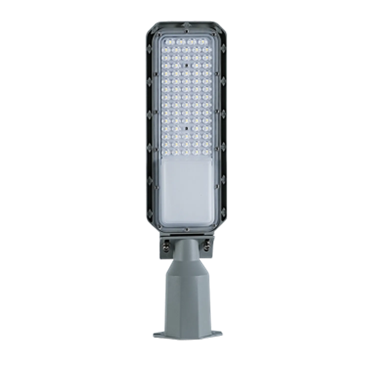
Get A Quote
Why Yellow Lights Are Used in Street Lights
Street lighting plays a vital role in ensuring safety and visibility for pedestrians, drivers, and urban landscapes. Among the various lighting options, yellow street lights have historically been a popular choice. In this blog, we’ll explore why yellow lights are used in street lights, their benefits, and how modern LED technology is transforming the landscape.
The History of Yellow Street Lights
Yellow street lights, also known as sodium vapor lights, have been used for decades. Introduced in the mid-20th century, these lights became a standard due to their efficiency and cost-effectiveness. Their distinct yellow hue made them easily recognizable and widely adopted across cities worldwide.
Why Are Yellow Lights Used in Street Lighting?
1. Enhanced Visibility in Foggy Conditions
One of the primary reasons yellow street lights are used is their superior visibility in adverse weather conditions like fog, rain, and snow. The yellow wavelength is longer and scatters less in the atmosphere, ensuring better illumination and reducing glare for drivers.
2. Energy Efficiency
Traditional sodium vapor lights are highly energy-efficient compared to incandescent bulbs. Their ability to produce a high amount of light with minimal energy consumption made them a preferred choice for city planners looking to reduce electricity costs.
3. Cost-Effective Operation
Sodium vapor lights have a longer lifespan and lower maintenance requirements, making them a cost-effective option for municipalities. This efficiency was crucial for large-scale installations where durability and reliability were key factors.
4. Reduces Light Pollution
Yellow light minimizes the amount of light scattering into the night sky, reducing light pollution. This helps in preserving the natural nighttime environment and improving urban aesthetics.
The Shift Towards LED Street Lights
While yellow street lights have been beneficial, modern LED technology is gradually replacing traditional sodium vapor lights. LEDs offer significant advantages, including:
- Better Energy Efficiency: LEDs consume less energy than sodium vapor lights while delivering higher brightness.
- Longer Lifespan: LEDs last significantly longer, reducing maintenance and replacement costs.
- Customizable Colors: LED street lights can be adjusted to emit specific colors, including yellow, without compromising efficiency.
- Eco-Friendly Technology: LEDs are mercury-free and recyclable, making them a greener choice.
Benefits of LED Street Lights Over Yellow Lights
1. Improved Light Quality
LEDs produce a more natural and uniform light compared to the monochromatic yellow of sodium vapor lamps. This enhances visibility for pedestrians and drivers.
2. Smart Lighting Capabilities
Modern LED street lights can be integrated with smart systems for remote control, dimming, and energy monitoring. This provides municipalities with better control over their lighting infrastructure.
3. Wider Color Temperature Options
While yellow lights are suitable for specific conditions, LEDs offer a range of color temperatures, allowing cities to choose the ideal light for their needs.
How to Choose the Right Street Lights
Selecting the right street light depends on several factors, including durability, energy efficiency, and environmental impact. Here are key considerations:
1. Weather Resistance
Choose lights with high ingress protection (IP) ratings to ensure they withstand harsh weather conditions.
2. Energy Efficiency
Opt for energy-efficient lighting solutions, such as LED street lights, to reduce electricity consumption and costs.
3. Longevity
Look for street lights with a long lifespan to minimize maintenance and replacement expenses.
4. Color Temperature
Determine the best color temperature based on the area’s requirements. Yellow light is ideal for foggy regions, while cooler tones suit urban areas.
Recommended Product: Infralumin LED Street Lights
If you’re considering upgrading your street lighting system, Infralumin’s LED Street Lights are an excellent choice. These lights combine advanced LED technology with customizable features, ensuring optimal performance and efficiency. Designed to withstand challenging weather conditions, Infralumin’s LED street lights offer superior durability, minimal maintenance, and a sleek design that enhances urban aesthetics. Explore Infralumin’s collection of LED street lights to find the perfect lighting solution for your needs.
Conclusion
Yellow street lights have long been valued for their energy efficiency, visibility in adverse conditions, and reduced light pollution. However, with advancements in LED technology, cities are transitioning to more efficient and versatile lighting solutions. By investing in modern LED street lights, like those offered by Infralumin, municipalities can ensure safer, more sustainable, and aesthetically pleasing urban environments.


